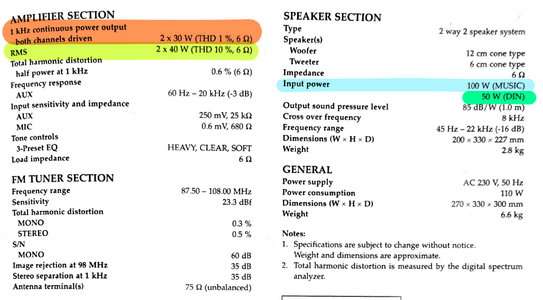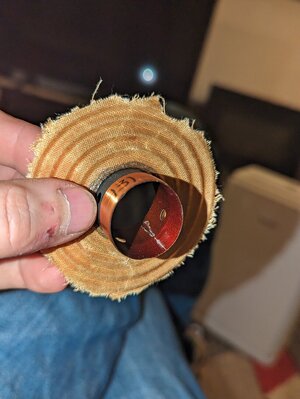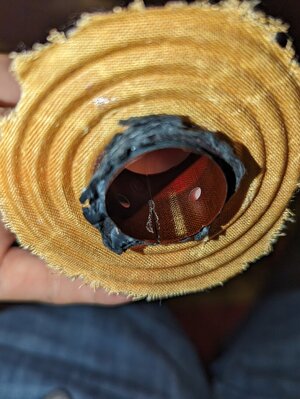Hi there,
I'm hoping that someone would help me decode the specs of my speakers.
For a very long time, I have had an old Panasonic SC-AK5 system.
The CD / Tape / Radio / Amp unit was repaired once around 10 years ago but it looks like the issue is back.
I'm thinking about keeping the speakers and buying a new amp.
However, I have an issue with determining how much actual rated power the speakers have.
The manual (and speaker stickers) says:
So what is the RMS for these speakers?
Is the MUSIC here the speakers' RMS?
Or is it peak power and the DIN rating value should be treated here as RMS?
The amp wattage is also confusing since it looks like it's underpowered against the speakers.
Thanks!
I'm hoping that someone would help me decode the specs of my speakers.
For a very long time, I have had an old Panasonic SC-AK5 system.
The CD / Tape / Radio / Amp unit was repaired once around 10 years ago but it looks like the issue is back.
I'm thinking about keeping the speakers and buying a new amp.
However, I have an issue with determining how much actual rated power the speakers have.
The manual (and speaker stickers) says:
- 100W (MUSIC)
- 50W (DIN)
- 6 Ohm (impedance)
- 85dB / W (sound pressure level)
- 2 x 30W - 1 kHz continuous power output both channels driven
- 2 x 40W RMS
So what is the RMS for these speakers?
Is the MUSIC here the speakers' RMS?
Or is it peak power and the DIN rating value should be treated here as RMS?
The amp wattage is also confusing since it looks like it's underpowered against the speakers.
Thanks!
Attachments
Last edited:









